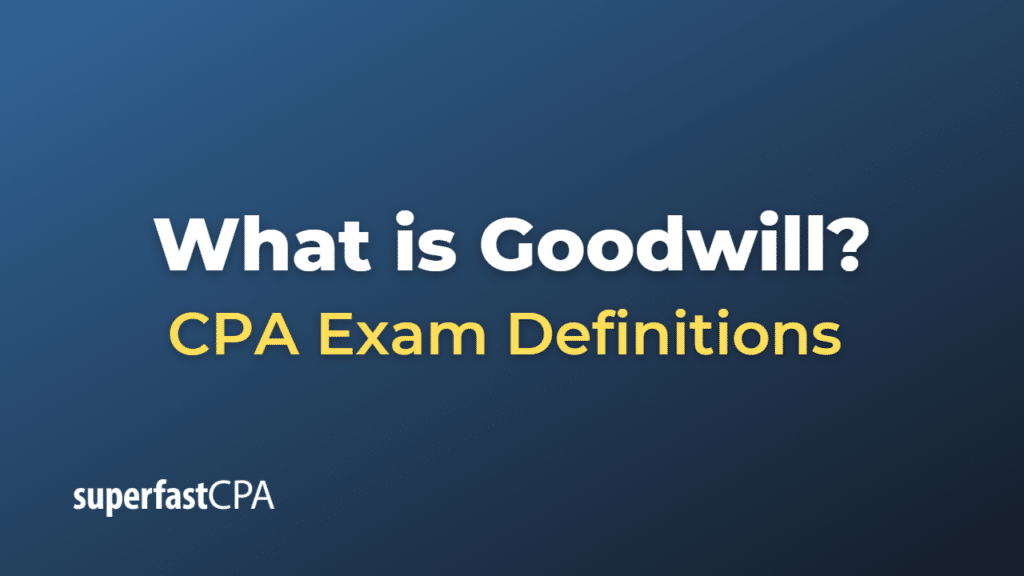Goodwill
Goodwill is an intangible asset that is associated with the purchase of one company by another. Specifically, it is the portion of the purchase price that is higher than the sum of the net fair value of all of the assets purchased in the acquisition and the liabilities assumed in the process.
Goodwill typically reflects the value of intangible assets such as a strong brand name, good customer relations, good employee relations, and any patents or proprietary technology. It can also arise from expected synergies from the merger, the acquired company’s reputation, or high employee morale.
For example, if Company A buys Company B for $3 million, but the fair market value of Company B’s net assets (assets minus liabilities) is only $2 million, the remaining $1 million is recorded as goodwill on Company A’s balance sheet.
Under current accounting rules (as of my knowledge cutoff in September 2021), companies are required to review the value of goodwill at least once a year and record any impairments. Impairments occur when the market value of the goodwill is less than the carrying value (book value) and result in a decrease in the value of goodwill on the balance sheet and an impairment loss on the income statement.
It’s important to note that goodwill is not amortized (i.e., gradually reduced over time like other intangible assets). Instead, it remains on the books at its original value until the company determines it has been impaired or the related business unit is sold.
Example of Goodwill
Let’s say that TechCorp, a large technology firm, decides to buy InnovInc, a smaller tech startup, for $20 million. InnovInc has tangible assets worth $8 million (like buildings, equipment, etc.), liabilities of $3 million (like debts or accounts payable), and recognized intangible assets of $2 million (like patents).
First, we need to calculate the net identifiable assets. The net identifiable assets are the fair market value of identifiable assets acquired minus liabilities assumed. So, in this case, that would be:
($8 million in tangible assets + $2 million in intangible assets) – $3 million in liabilities = $7 million.
Now, TechCorp paid $20 million for InnovInc, but the net identifiable assets of InnovInc are worth only $7 million. The excess amount is recognized as goodwill:
$20 million purchase price – $7 million net identifiable assets = $13 million in goodwill.
So, in this example, TechCorp would record $13 million of goodwill on its balance sheet after the acquisition. This goodwill reflects the premium TechCorp paid for InnovInc over and above InnovInc’s net identifiable assets, capturing the value of aspects not accounted elsewhere like InnovInc’s exceptional team, its strong customer base, or potential synergies TechCorp can realize.
Going forward, TechCorp would test this goodwill for impairment annually or more frequently if there are indications of possible impairment. If the goodwill is found to be impaired, TechCorp would have to write down its value, recognizing an impairment loss in its income statement.













